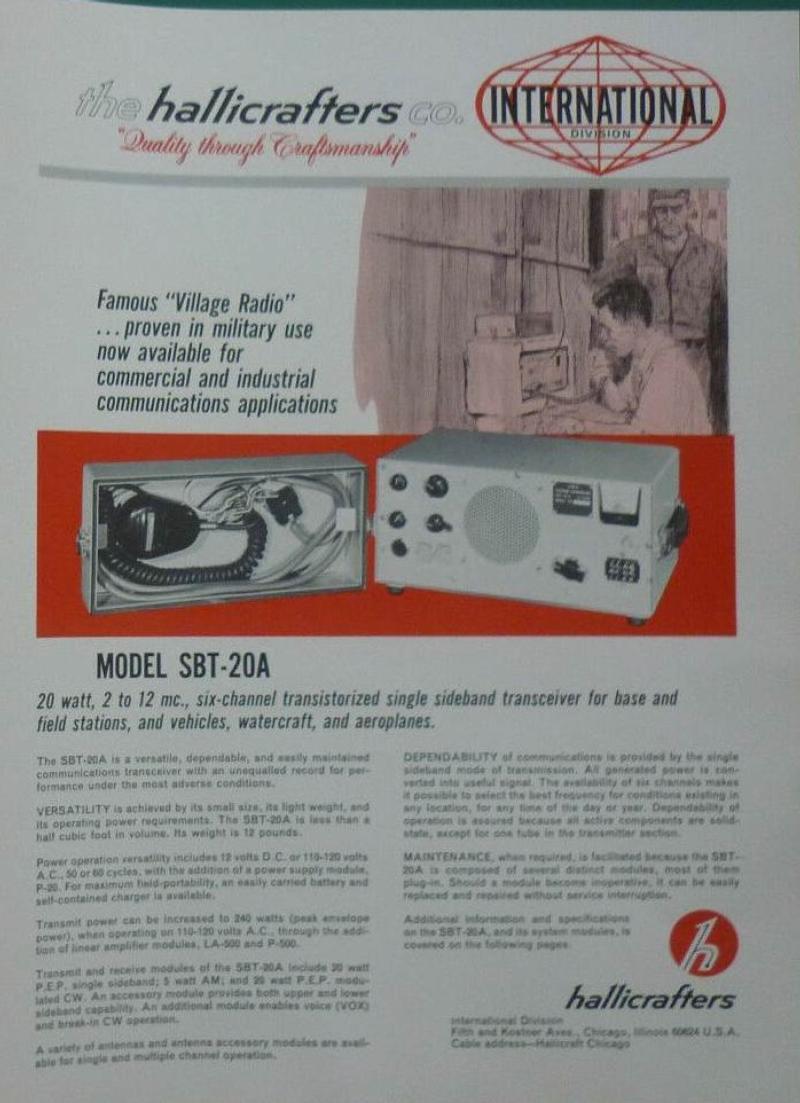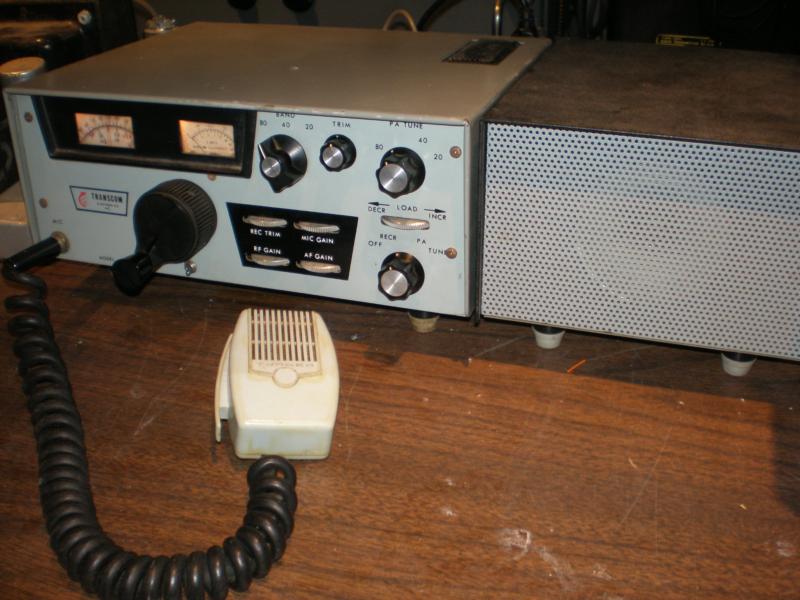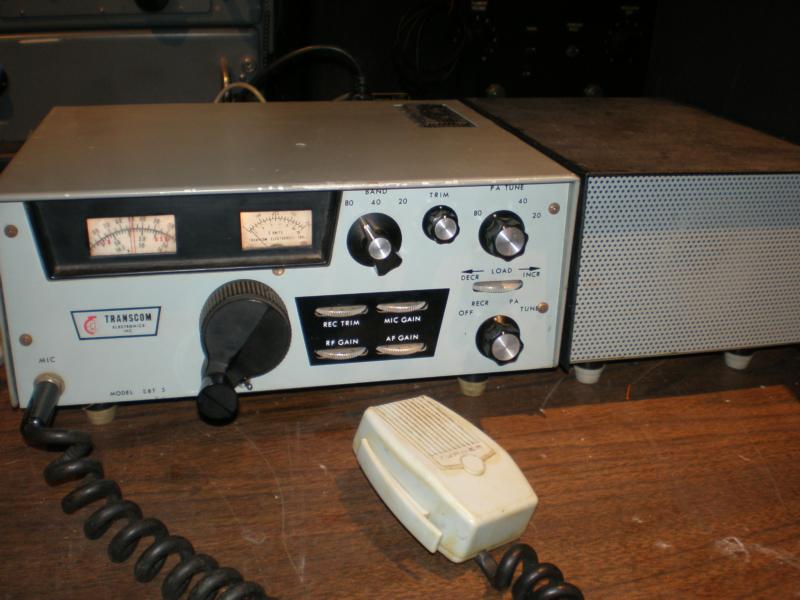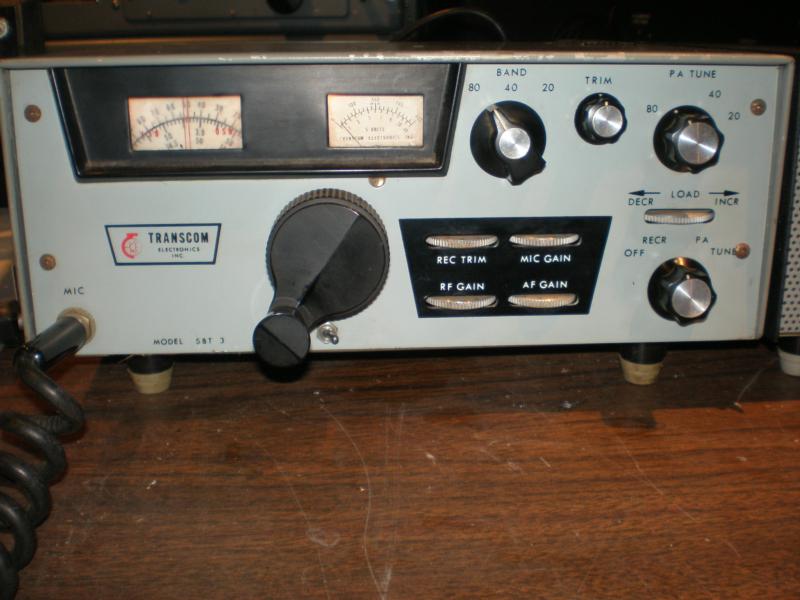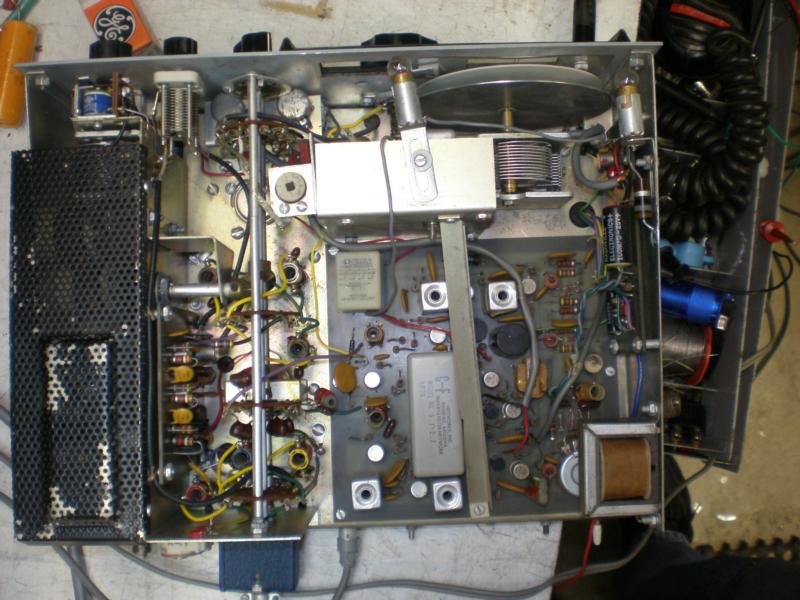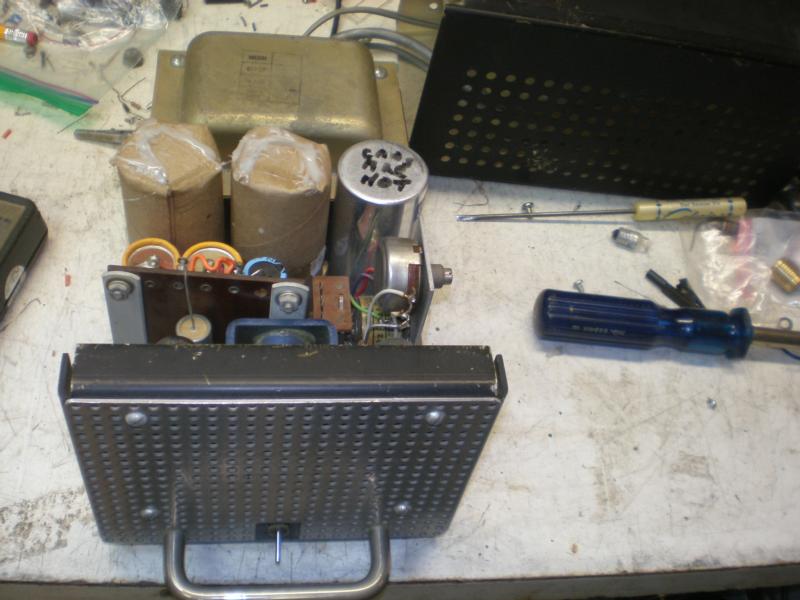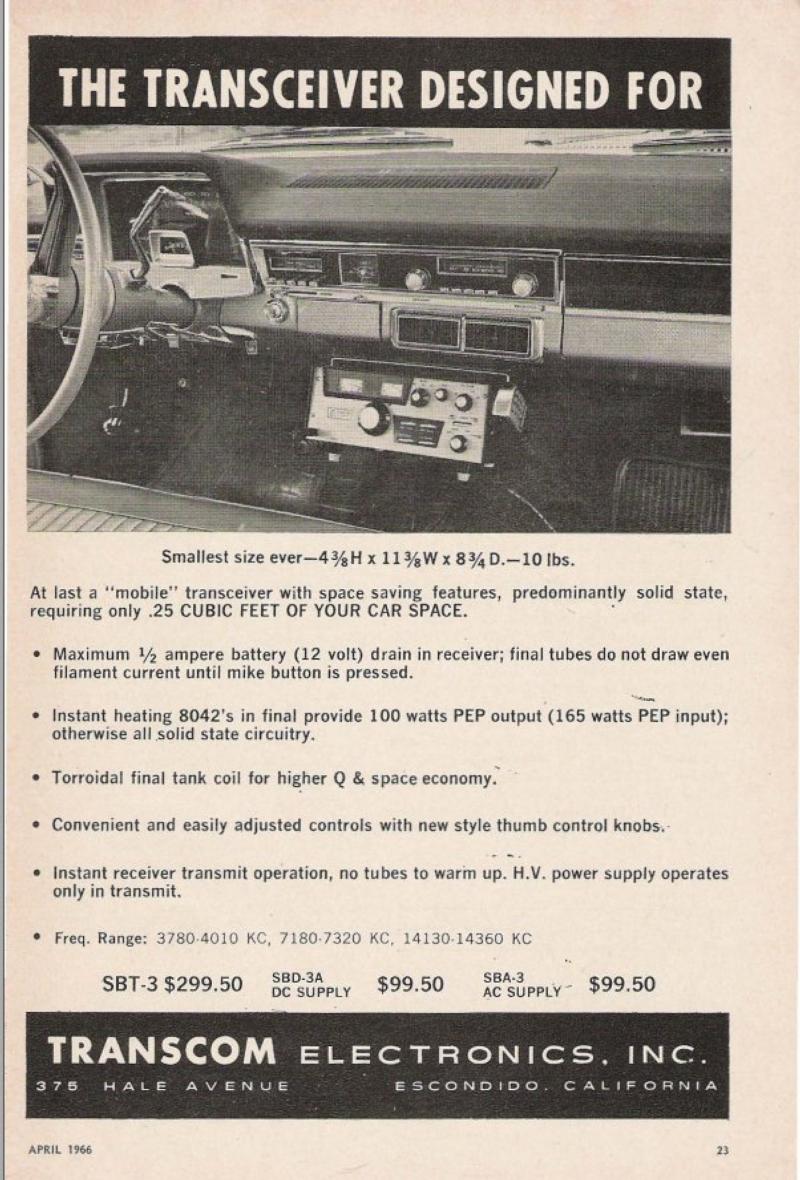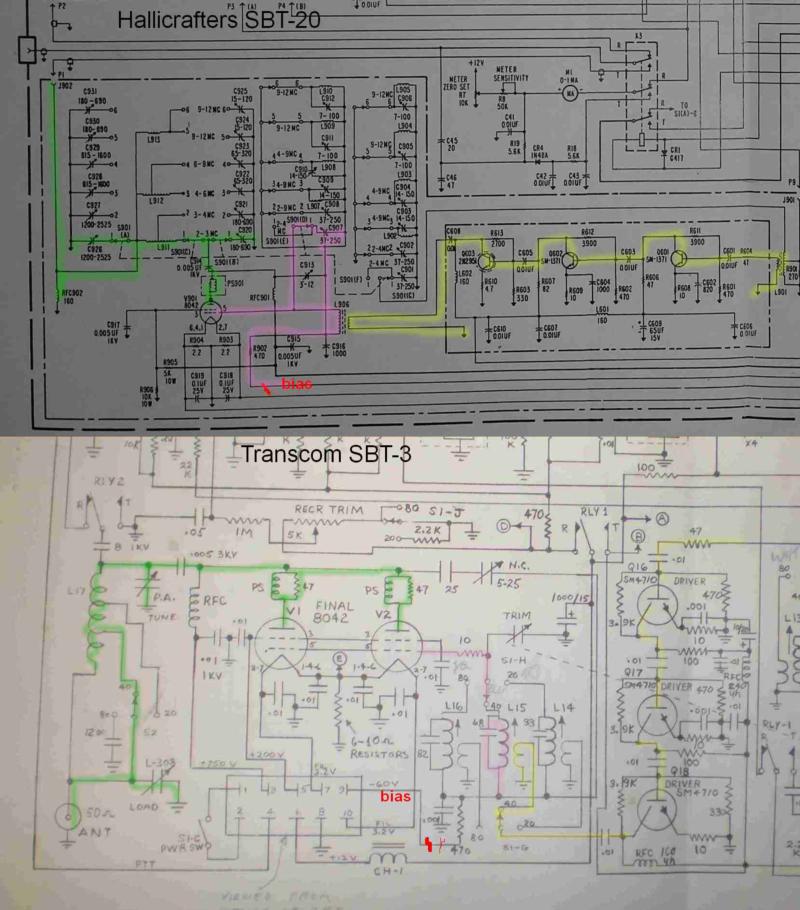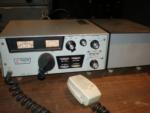
Posted By: Robert Nickels (ranickels) Posted: 01/16/2021 Vintage Ham Radio 01/16/2021 |
The amazing Transcom SBT-3one of ham radio's one hit wonders |
|
If, like me, you enjoy flipping through old issues of 73 magazine from the 60s, you're bound to have at least seen the ads for the Transcom SBT-3 three-band SSB tranceiver. Being made in Escondido CA in the mid-60s, my guess has always been that engineers from other San Diego SSB compnanies such as Don Stoner, Les Earnshaw from Southcom, Herb Johnson, founder of Swan or Faust Gonsett may have had a hand in the design, which was quite advanced for the time. It turns out that my guess is wrong, but close - it was a native of Manitowock WI who was the driving force behind Transcom (see below). A few of the innovative features included all solid-state operation which was a real plus for mobile operation, varactor-tuning of front-end circuits using compact edgewise pots, and only two tubes, a pair of instant-heading 8042s in the 100 watt PA. Yes, Transcom managed to implement a transistorized driver using a three-stage transistorized amplifier chain, rather than opting for the 3rd tube as SBE and the rest did. That alone speaks to having an engineer with good technical chops! The output power in the two SBT-3s I have has never quite reached the 100 watt level but the signal is good, stable, and powerful enough to get the job done. 40 meter output is down somewhat from 80 and 20 due to the multiplication that occurs in the VFO amplifier for that band. Overall I had little difficulty in getting both on the air, however one came with a nicely built homebrew power supply that did need to be recapped. Whoever built that power supply knew a few things about compact design too! I ran into a fellow restorer, Dale W4OP a few years ago and offered some suggestions on the SBT-3 he was working on. You can read his comments and look a a number of good pics on Dales site: http://www.parelectronics.com/vintage-transcom-sbt3.php Dale also was able to learn a lot about the origins of Transcom as he explains: "The owner/designer of the SBT-3 was Cal Heisinger, W9TRG of Wisconsin. Prior to Transcom, Cal worked for Lakeshore Industries of Manitowoc, Wisconsin. Lakeshore is well remembered for their early phasing type SSB transmitters and the Bandhopper VFO. He later joined Gonset Corp. as an electrical engineer. When Gonset bought a building in Los Angeles in the late 1950s, Cal moved west with them and obtained his W6MNH call. Later, Gonset bought a building in Encinitas and Cal moved to Escondido to be closer to the Gonset plant. After leaving Gonset, Cal worked for Minitron, a manufacturer of Citizens Band gear. I have been unable to locate any MiniTron radios. Amateur radio remained his first love however, and he left Minitron to start Transcom and manufacture a small amateur transceiver- the SBT-3. The SBT-3 is a small (11.5 X 9 X 4.5”) SSB only transceiver for 80, 40 and 20M bands. The rig employed some very novel circuitry including a varicap tuned front end (RCVR PEAK), a very clever VFO and mixing scheme, a solid state PA driver (3X SM4710 Ge PNP) and a pair of instant heat 6146 finals (type 8042). At its peak, Transcom had 2 production lines running employing 10 women. While amateurs appeared to really like the SBT-3, Cal had difficulty collecting payments from his amateur dealers. As a result, he began selling directly to amateurs and also designed a commercial version of the SBT-3. One order of 200 units went to the Philippine government." For those like myself who are intersted in the industrial history aspect, this makes three companies that decended from Gonset: Transcom, Swan (Herb Johnson designed the G-76 while at Gonset), and Sideband Engineers (SBE) which was started by Faust Gonsett himself in 1962, a year or so after leaving the company his father started and which had been sold to Young Spring and Wire in 1958. The San Diego area was certainly a thriving hub of SSB manufacturing in the early 1960s. While companies like Transcom were not in the amateur radio market for long, often they leave footprints that turn up elsewhere. (See my article on the origin of the Astro synthesizer in the Stoner PRO 80-10 for an example(. In the case of the Transcom I'm not sure which was the chicken and which was the egg, but that solid-state driver amplifier seems to be very similar to that used by an even rarer radio - the Hallicrafters SBT-20. While there are differences, the similarities are close enough that I'm convinced there was at least some arms-length benchmarking and "borrowing" if not a closer collaboration. Both used the same three-stage design, both used SM-series PNP germanium transistors, both used link coupling to the grid circuit of the PA tubes, and both were used to drive the same 8042 PA tube(s). I've marked up the PA section of both schematics to show the similarity which is somewhat remarkable since very few if any other radios use solid state drivers with a vacuum tube PA. All in all the Transcom SBT-3 made it's mark on ham radio if not in the owner's checkbook and they're a fun radio to restore and use on the air. And that's just what I did on Jan. 16,2021 when I checked into the Vintage SSB Net with the SBT-3. The net audio was recorded and you can hear the Transcom by going to the website and advancing the audio player to 42;05: LISTEN HERE We have a lot of fun on this net and welcome anyone else who loves "old vintage sideband junk" and doesn't take it too seriously to join us, Saturday mornings CST at 8:45 on 3842 +/- QRM. |
|
Related Images
Click on the image title or on the image itself to open the full-sized image in a separate window.Latest Articles
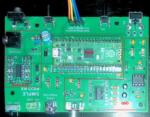
Technical
Posted: 01/29/2025
Comments: 0 |
Pico Rx performance - Excellent performance on 630m WSPR
The Simple Pico Rx is my minimalist implementation of Jonathan Dawson's "Pico Rx" at 101things: https://github.com/dawsonjon/PicoRX In this basic form the receiver consists of a Quadrature Sampling Detector (QSD aka Tayloe) and the Pico2 MCU which handles all DSP functions. There are NO front-end filters, the only bandwidth limitation comes from the tracking filter... READ MORE |
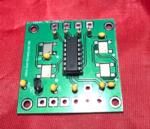
Crystal Replacement
Posted: 08/226/2024
Comments: 0 |
Making SMT "no lead" parts easier to use
SMT is the future - but how can we actually use parts without leads? ... READ MORE |
|
Crystal Replacement
Posted: 02/38/2024
Comments: 0 |
How good can a crummy receiver be?
Hundreds of different simple SDR receivers have been designed around Dan Tayloe's Quadrature Sampling Detector or QSD. Mine add nothing to the state of the art, and in fact subtract things, as I like minimalist solutions and the QSD is right in that sweet spot. Following the evolution of Tayloe's design I delete the resistors in series with the sample lines for inst... READ MORE |

Technical
Posted: 02/37/2024
Comments: 0 |
What's in a number (3253)?
The FST3253 dual four-to-one mux/demux IC has long been used as a "Tayloe Detector" or QSD (and QSE) in low-cost SDRs. They provide incredible performance for such a simple circuit, converting RF to baseband IQ with low loss and the ultimate in simplicity. Unfortunately the original FST3253 part has become obsolete and while substitutes are available, this is where the... READ MORE |

Vintage Ham Radio
Posted: 02/32/2024
Comments: 0 |
The Stancor 10P Transmitter
There weren't really many commercial transmitters in the 1930s as most hams built their own. But many of the ones that were offered came from the transformer companies who had two chances to profit. First, from those who would buy the kit, and two, from those would would see it in the (free) booklets the companies provided to their distributors who would then sell the iron to ham... READ MORE |

Vintage Ham Radio
Posted: 12/355/2023
Comments: 0 |
The Care and Feeding of the EF Johnson Courier amplifier
The EF Johnson "Courier" is a grid-driven amplifier using two 811A tubes. Switching is provided for operating in either class C for CW or as a class B linear amplifier for AM or SSB. Rated power is 500 watts input for CW, 500 watts PEP input for SSB, and 200 watts input for double-sideband AM with carrier. Since all amateur power levels were meas... READ MORE |

Historic
Posted: 11/329/2023
Comments: 0 |
TV Duplexer
Some things are interesting, even if totally useless nowadays. Such is the case with the Philco 426-3034 Crossover Kit for UHF TV. What the heck is that? Well, back in the late 50s, UHF television stations operating on channels 14-83 started to appear in many areas of the US where viewers had a VHF-only TV antenna, and in many cases an externa UHF converter was... READ MORE |

Crystal Replacement
Posted: 11/327/2023
Comments: 0 |
Replacing failed crystals
For decades, quartz crystals were used everywhere a stable frequency source was needed, even in some applications that depended on overtone (harmonic) behavior into the VHF range. These crystals were less stable and more dependent on circuit parameters that fundamental types and thus more problematic. Such was the case with the 94 MHz crystal in the 2 meter converter ... READ MORE |

Historic
Posted: 11/315/2023
Comments: 0 |
My Own Ham Radio Story by W9RAN
Everyone has a story of how they got involved in ham radio - this is mine. It started much earlier, including receiving a Knight Kit Span Master shortwave radio for Christmas in about 1963, at age 12. I'll never forget the night my dad and I finished building it and I wanted to try it out. It came with a 50 ft. antenna which was still coiled up - but ... READ MORE |

Technical
Posted: 09/267/2023
Comments: 0 |
Hot to simulate vacuum tubes in LTSpice
LTSice is a powerful simulation tool that is provided free by Linear Technology Corp. It comes with a complete library of passive and common analog solid-state components but if you want to use it to simulate vacuum tubes, it doesen't work as-is. Even though triode and pentode symbols can be found in the "Misc" folder, they are just schematic symbols and... READ MORE |
